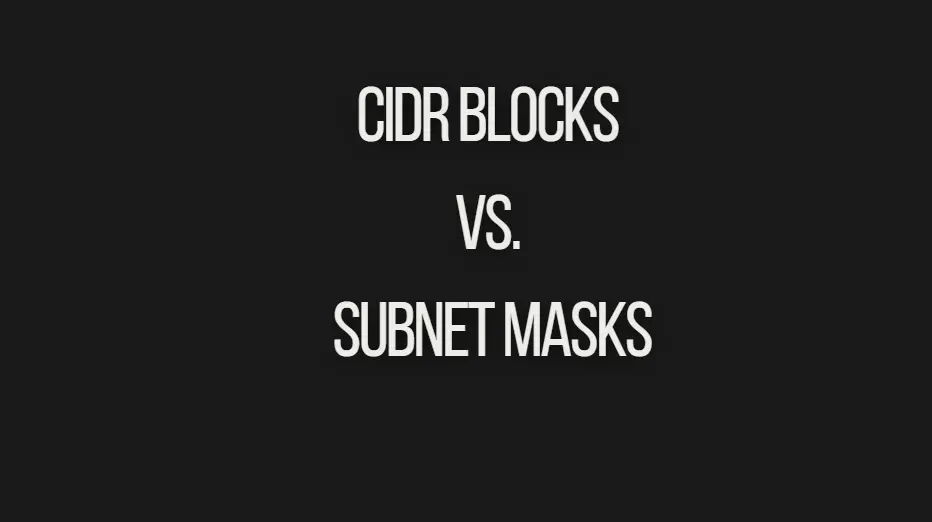In the realm of computer networking, IP addressing is vital for facilitating communication between devices across various networks. To effectively oversee extensive networks, techniques such as CIDR (Classless Inter-Domain Routing) blocks and subnet masks are employed. While both CIDR blocks and subnet masks pertain to the segmentation of IP address spaces, they fulfill distinct roles and are applicable in different scenarios. Grasping the nuances between these two concepts is important for network professionals and individuals engaged with IP addresses.
Table of Contents
ToggleWhat is a CIDR Block?
CIDR, or Classless Inter-Domain Routing, is an approach designed to allocate and manage IP addresses in a more efficient manner. It was developed to overcome the constraints of the traditional classful addressing system, which segmented IP address spaces into rigid categories like Class A, Class B, and Class C. By enabling a more adaptable and effective utilization of IP address space, CIDR minimizes the unnecessary consumption of IP addresses and streamlines the routing process.
A CIDR block is expressed as <IP Address>/<Prefix Length>, where the IP address denotes the starting point of the network, and the prefix length specifies the number of bits designated for the network segment. For instance, the CIDR block 192.168.0.0/24 indicates that the initial 24 bits are reserved for the network, allowing the remaining 8 bits for host devices, resulting in a total of 256 possible addresses (ranging from 192.168.0.0 to 192.168.0.255).
CIDR blocks enable network administrators to assign IP addresses with greater precision. Rather than allocating an entire Class C network with 256 addresses, they can create smaller subnets tailored to the specific number of required IP addresses. This approach aids in conserving IP address space and minimizing the size of routing tables.
What is a Subnet Mask?
A subnet mask is a 32-bit number used to divide an IP address into two parts: the network portion and the host portion. It defines the size of a subnet by indicating which part of the IP address is used for network identification and which part is used for host identification. Subnet masks are used primarily in local networks to separate different subnets, making network management more efficient.
The subnet mask is written in dotted decimal format, such as 255.255.255.0. The 255s represent the bits dedicated to the network portion, and the 0s represent the bits available for hosts. A subnet mask of 255.255.255.0 indicates that the first 24 bits of an IP address are used to identify the network, and the remaining 8 bits can be used for host addresses within that network.
While CIDR notation uses a more compact format (e.g., /24), subnet masks use a more traditional 32-bit format (e.g., 255.255.255.0). The subnet mask works with the IP Address to determine which part of the address is the network and which part can be assigned to hosts.
Key Differences Between CIDR Blocks and Subnet Masks
Notation: CIDR blocks use the format <IP Address>/<Prefix Length> (e.g., 192.168.0.0/24), whereas subnet masks use dotted decimal notation (e.g., 255.255.255.0).
Purpose: CIDR blocks are used for routing and allocating IP address spaces in a flexible manner, especially in large-scale networks. Subnet masks are used within a network to define how IP addresses are divided between the network and host portions.
Flexibility: CIDR provides more flexibility in terms of address allocation, allowing for networks of varying sizes (from /8 to /32). Subnet masks are typically fixed in size (e.g., /24, /16) and are often used to define subnets within a CIDR block.
Practical Usage of CIDR Blocks and Subnet Masks
CIDR Blocks: CIDR blocks are used by Internet Service Providers (ISPs) and organizations to allocate and manage IP addresses. For example, ISPs use CIDR blocks to assign IP address ranges to customers and route internet traffic efficiently.
Subnet Masks: Subnet masks are used within an organization’s internal network to divide a larger network into smaller, manageable subnets. This helps improve security, reduces congestion, and makes the network easier to manage.
Working Together
CIDR blocks and subnet masks often work together in a network. A network may be allocated a CIDR block, such as 192.168.0.0/16, which represents a large range of addresses. Within this range, subnet masks are applied to divide the network into smaller subnets, such as 192.168.1.0/24 for a smaller department or group of devices.
Conclusion
Both CIDR blocks and subnet masks play essential roles in managing IP address spaces. CIDR blocks provide a more flexible way to allocate and manage IP addresses for large-scale networks, while subnet masks are crucial for defining network boundaries and host addresses within a specific network. Together, they ensure the efficient allocation of IP addresses, reduce routing complexity, and help organizations optimize their network infrastructure. Understanding how CIDR blocks and subnet masks work will enable network professionals to design more efficient and scalable networks.




This is a very well thought out webpage. Very engaging and a great read.
Wow! This blog looks just like my old one! It’s on a entirely different subject but it has pretty much the same layout and design. Superb choice of colors!
My brother suggested I might like this website. He was entirely right. This post actually made my day. You can not imagine simply how much time I had spent for this info! Thanks!
This is a great post. It’s very informative and well organized. I’ll check back for more posts like this one.
Valuable information. Lucky me I found your site by accident, and I am shocked why this accident did not happened earlier! I bookmarked it.
Good blog! I truly love how it is simple on my eyes and the data are well written. I am wondering how I could be notified when a new post has been made. I have subscribed to your RSS feed which must do the trick! Have a nice day!